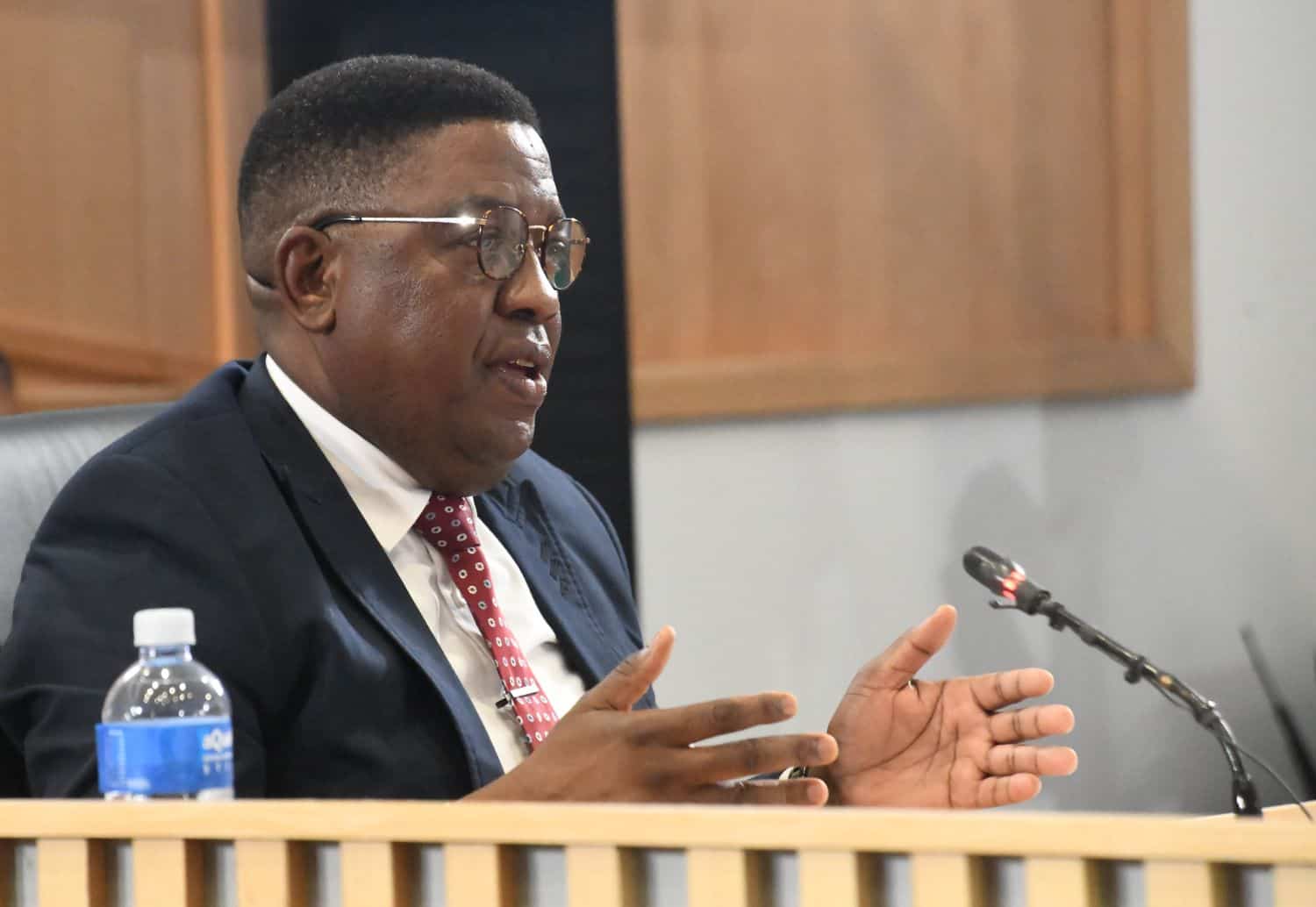The Saps pays R3.8 million a month to service these machines; however, they are never fully occupied at any given time due to staff shortages.

South Africa is battling a high violent crime rate, with incidents of shootings reported on a daily basis. In addition to this crisis, the South African Police Service (Saps) is grappling with a shortage of human resources in crucial departments.
This further creates backlogs in solving these cases.
Brigadier Mishak Mkhabela, Head of Ballistics Section at the Forensic Science Laboratory in Pretoria, testified about this crisis at the Madlanga Commission on Monday.
Previously, witnesses A and B testified about the difficulties in the processes of linking firearms to shootings and how criminals have now learned to manipulate crime scenes to avoid arrests.
Last week, witness A told the commission that police discovered that the cartridges in the Armand Swart assassination had been collected from the crime scene “maybe for the purposes to dispose of, so that they cannot be linked to the firearm.”
ALSO READ: Armand Swart murder: investigator details how they allegedly linked Katiso Molefe to case
This plan, however, was unsuccessful as evidence allegedly connects the same high-calibre rifles used in Oupa Sefoka’s, also known as DJ Sumbody, murder, to other killings, including those of DJ Vintos, Hector Buthelezi and Swart.
However, it was not an easy process.
Ballistics analysis process
Mkhabela detailed the process of linking cartridges and bullets to firearms and to prior crimes, which, when not managed properly, can lead to delays in solving cases.
The Ballistics Section of Saps conducts forensic analysis of firearms, ammunition and related evidence for criminal investigations.
“The unit’s objective is to analyse and preserve evidence that can identify a specific firearm used in a crime scene, including linking evidence of analysed firearms to other crime scenes,” he explained.
“When bullets are discharged from firearms, they leave unique striation marks on both the bullet and the cartridge cases, which could link a particular firearm to a specific crime. The striation marks are created by the passage of the bullet through the barrel of the firearm.
“Impression marks are created by impact with the firing pin, breech face and ejector on a cartridge case. Both the striation and impression marks are unique to the firearms.”
ALSO READ: DJ Sumbody murder: Here’s why Katiso ‘KT’ Molefe thinks he should get bail
In some cases, criminals erase serial numbers on firearms. However, Saps uses a technique known as the restoration of obliterated figures on metals.
“The technique uses chemicals that are applied to the surface where the serial number has been erased. The analyst will take the firearm to the lab, apply the chemical to retrieve the filings that were filed off. Upon completion, another independent analyst will verify the results and sign off,” he explained.
However, there is no guarantee that analysts will always be able to retrieve the serial number. This depends on how deeply the serial number was erased, as some criminals use a grinder to obliterate it.
Integrated Ballistics Identification System (IBIS)
Mkhabela further testified about the Integrated Ballistics Identification System (IBIS), which automates ballistic testing.
“Because of the high level of violent crimes that we experience, which involve firearms, it is imperative to have a system that is going to automate the system, and this is the kind of system that we have,” he said.
“We started using this system in 1997 to date. The system captures and compares digital images of bullets and cartridge cases to link firearms used in different crimes. It stores this data.”
ALSO READ: Firearms used in DJ Sumbody’s murder linked to 10 other high-profile cases
The machine scans and captures high-resolution digital images of bullets and cartridge cases, including unique marks such as firing pin impressions, firing pin marks, and breech face mark patterns.
The analyst will first capture the case details, which include the case number, station number, lab number, and exhibit details. The analyst then puts the exhibit in the cartridge case holder of the machine, scans it, and captures it on the system.
Once stored, the system begins searching for similar cases. It uses advanced mathematical algorithms to determine whether there are any similarities with previous firearms. If the network is stable, this process can take five to 24 hours, said Mkhabela.
Viewing process
The process is where human resources are needed, and according to Mkhabela, the Saps is lacking.
After the machines have identified potential hits or links to prior cases, an operator must sit at the screen and review all cases the system has identified as potential hits.
“If he’s satisfied that there are similarities, he will make a printout of the images, request the physical exhibits, and compare them under a microscope,” explained Mkhabela.
ALSO READ: Police make breakthrough in Ekurhuleni auditor Mpho Mafole’s murder
But only three analysts can perform this task at his branch, he said.
Mkhabela said it could take three months for a case to be finally assigned to an analyst.
“It’s a process that is dependent on the resources you have at your disposal.”
Saps resource shortage
At his branch, they have eight cartridge photographing machines and three bullet photographing machines.
“For the longest time, we never had that luxury of having a complemented staff to sit in front of those machines. We are currently not able to operate all the existing machines,” said Mkhabela.
“At a particular time, you may find that we have four fully occupied machines. Under the service level agreement, we pay a monthly fee of over R3.8 million for maintenance of this system.
“Unfortunately, that is the reality.”
Mkhabela explained that the three full-time analysts at his branch are also assigned other tasks in addition to reviewing cases, which take time.
“Because of the complications of the viewings, the person must spend eight hours watching the screen. This becomes exhausting,” said Mkhabela.
“They can only view around 200 images per day, and you have over 28 000 that need to be viewed. So that tells you the extent of the challenges in terms of human resources that we are faced with.”
Some images remain in the system and haven’t been viewed for more than a year.
“Ideally, you want to complete this process as soon as possible. If we want to achieve the real-time viewings, we’ll need additional members. As they view these images, more are coming in. It’s like a conveyor belt. At some point, we did have enough members.
Saps’ IBIS analysts in numbers
Mkhabela explained that the Saps need 66 analysts to run the IBIS system optimally in real time, given the resources they have.
“We are currently operating with a half shortage currently and our existing contract [maintenance contract and machines] would cover them without any additional resources added.”
The Pretoria headquarters currently has 16 analysts, but needs 30 to operate optimally.
In KwaZulu-Natal, there are seven analysts, while the region needs 14.
The Western Cape is operating with seven analysts, although it needs 14. The Eastern Cape has three analysts, but it needs eight in total.
NOW READ: Hitman sentenced to life for murder of ANC councillor Zakhele Khuzwayo






